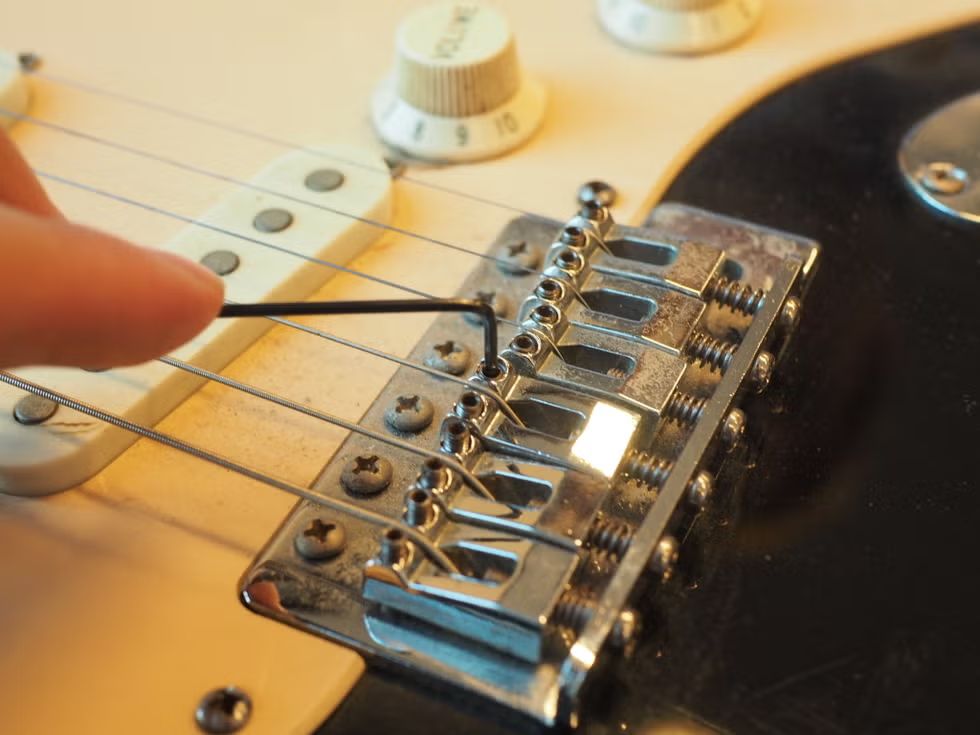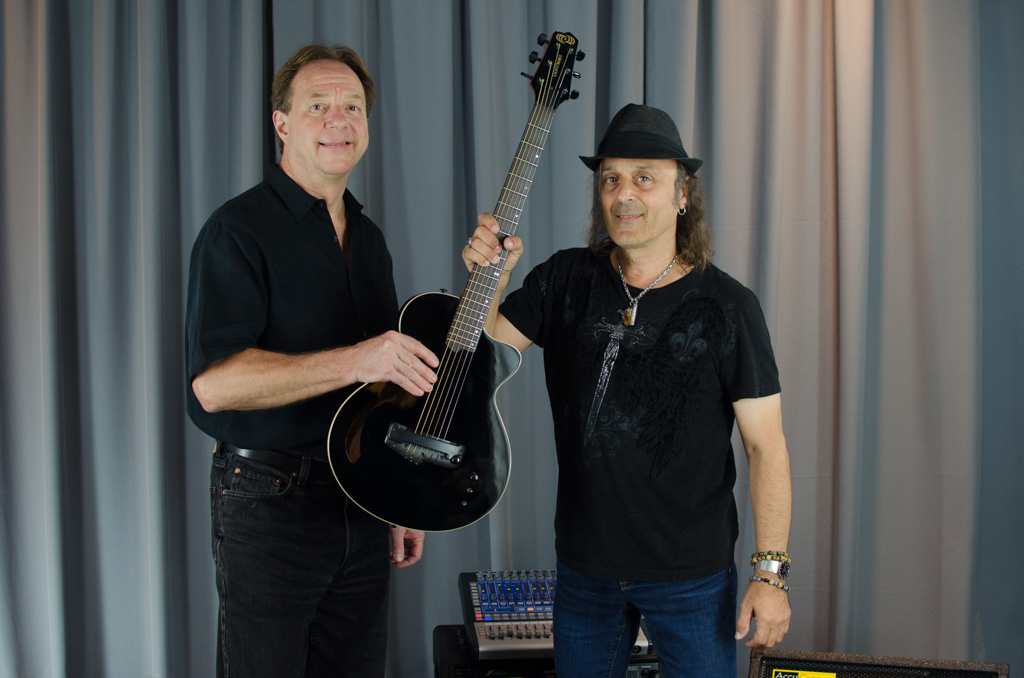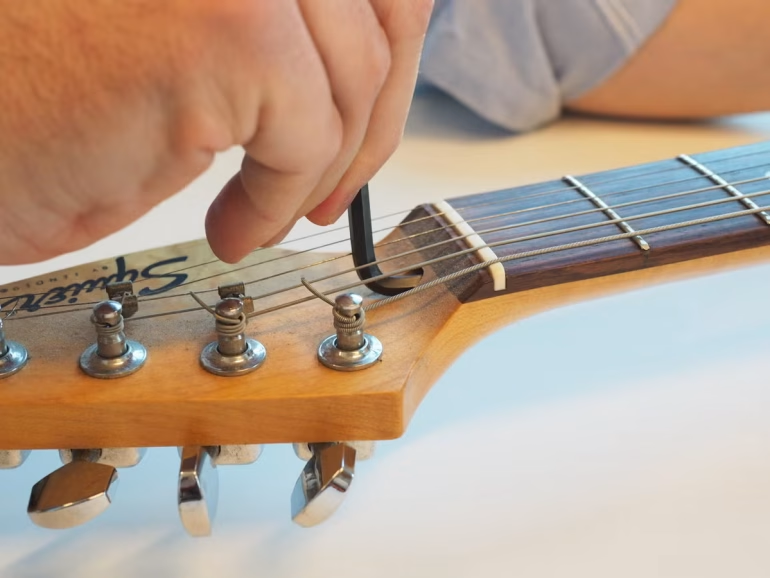When you hear a guitar line that feels perfectly placed in a song, it’s rarely an accident. Behind that sound is a producer carefully choosing the right guitar, amp, and effects to shape not just tone, but the emotion of the track.
The setup is like the color palette of a painting – different combinations create entirely different moods.
Key Points
- Every choice begins with the song’s intention – its mood, genre, and story.
- The guitar, amp, and pedals are treated as one system rather than separate tools.
- Small tweaks, like strings or picks, can change the feel dramatically.
- Studio techniques (mic placement, layering) refine the raw sound.
- The setup is never about showing off gear – it’s about serving the song.
Reading the Song Before Touching a Guitar
Producers don’t just plug in and play. They listen first. Is the track a high-energy anthem meant to electrify a stadium, or a stripped-back ballad that leaves space for lyrics? That initial read determines the guitar setup.
Think about it this way: a jangly single-coil tone might sparkle in an indie-pop tune but would feel out of place in a doom metal track. Likewise, a heavy, distorted wall of sound can drown out the intimacy of a folk ballad. Producers decide early on whether the guitar should be in the spotlight or working quietly in the background to glue the arrangement together.
Guitars and the Subtle Role of Accessories
Different guitars naturally lend themselves to different roles. A Fender Telecaster might snap with brightness for country or funk, while a Gibson Les Paul provides the thick, sustaining voice that rock producers often chase.
But the guitar itself is only half the equation. Small choices – strings, capos, slides, or even the thickness of a pick – give producers another level of control. These guitar accessories often decide whether the tone cuts through or blends in.
For example:
- A heavier pick adds more attack, perfect for aggressive riffs.
- A slide turns the guitar into a vocal-like instrument, common in blues ballads.
- Switching to lighter strings can brighten the tone and make bending easier.
These adjustments may seem minor, but they’re often the difference between a guitar track that feels “right” and one that feels out of place.
Amps as a Second Voice

If the guitar sets the foundation, the amp shapes how that voice is projected. Tube amps often deliver warmth and natural compression, while solid-state or digital amps give producers more flexibility and control. A skilled producer treats the amp not just as a speaker, but as an extension of the instrument itself.
Instead of drowning everything in distortion or scooping mids, they’ll ask: Does this setting leave space for the vocals? Does the low end clash with the bass? Will the chorus feel bigger if the amp tone changes slightly?
Some classic tone-shaping approaches include:
- Using slight overdrive for crunchy rhythm guitars that support without overpowering.
- Dialing in sparkling cleans with compression and reverb for airy pop or funk.
- Pushing amps harder for saturated leads that demand attention.
Pedals as Storytelling Tools
Effects pedals are often where personality comes into play. Producers think of them like seasoning: a pinch here enhances flavor, but too much can ruin the dish.
- Delay and reverb can create space, making a solo sound like it’s echoing across a canyon.
- Chorus or phaser adds texture, giving simple chords a shimmering, dream-like quality.
- Wah or envelope filters sharpen rhythm in funk, making the guitar as percussive as it is melodic.
The trick is restraint. A producer might hold back on effects in the verses so the chorus feels more dramatic when delay or distortion suddenly blooms.
Studio Decisions: Mics, Layers, and Space
Once the guitar and rig are set, the studio itself becomes part of the instrument. Mic placement, for instance, can make the same amp sound either sharp and aggressive or soft and rounded. Producers experiment – pointing one mic dead center for brightness, another toward the speaker’s edge for warmth, sometimes blending both.
Layering is another powerful technique. A single guitar track might sound flat, but double-tracking – recording the same part twice and panning left and right – creates a wide, cinematic feel. Adding a slightly different tone on top can turn a simple rhythm into a wall of sound that still feels controlled.
Genre Expectations and Creative Twists
Every genre carries certain tonal expectations, and producers weigh these carefully:
- Blues/Jazz: Smooth, clean tones, often with hollow-body guitars and subtle reverb.
- Rock/Metal: High-gain amps, humbuckers, and tight low end for riffs.
- Pop: Balanced tones with shimmer – often chorus or delay for sparkle.
- Acoustic/Folk: Natural resonance with minimal effects, focusing on warmth.
But sticking too closely to “rules” can make a song predictable. Great producers know when to twist conventions – for instance, running a folk-style fingerpicking part through a chorus pedal to give it a dreamy, unexpected sheen.
Knowing When to Add – and When to Pull Back
Sometimes the best production decision isn’t what gear to add, but what to leave out. Too many layers or too much distortion can clutter a mix. On the flip side, a bold, experimental effect can elevate an otherwise standard track.
The producer’s job is to constantly ask: Does this serve the song? If the answer is no, the setup gets simplified until the guitar feels like part of the whole, not a distraction.
Collaboration: Producer and Guitarist as a Team

Behind every memorable guitar tone, there’s usually a dialogue between the producer and the guitarist. The producer brings an ear for the bigger picture – how the guitar sits in the mix, how it interacts with drums, vocals, and bass – while the guitarist brings the personal touch that no piece of gear can replace.
This process is rarely one-sided. A producer might suggest a crisp, clean tone to highlight vocals, while the guitarist might lean toward adding a bit of overdrive for energy. The end result often lands in the middle, blending the producer’s vision with the guitarist’s natural style. That balance is what keeps the sound authentic. Many of the most iconic tones in music – think of U2’s atmospheric layers or Hendrix’s raw energy – came from exactly this kind of partnership.
Collaboration also saves time. Instead of endlessly swapping pedals or adjusting knobs in isolation, a strong producer-guitarist team quickly narrows in on what feels right. Once the setup is agreed upon, the focus shifts to performance, where the human touch makes the difference between a technically correct part and one that actually moves listeners.
Closing Thoughts
Choosing the right guitar setup isn’t about showing off gear or collecting the latest pedals. It’s about crafting a sound that makes sense for the song, the moment, and the listener.
From strings and amps to mic placement and mix layering, producers use every detail to sculpt tone into emotion.
When done right, the result feels effortless – like the guitar was always meant to sound exactly that way.
- Every SZA Era Explained Through Her Outfits, From TDE Beginnings to the SOS World Tour - November 13, 2025
- The Career of Mozzy and How His Music Changed the Direction of West Coast Rap - November 13, 2025
- The Many Faces of Vanessa Kirby: Princess Margaret, Grieving Mother in Pieces of a Woman, and Marvel Icon - October 24, 2025



